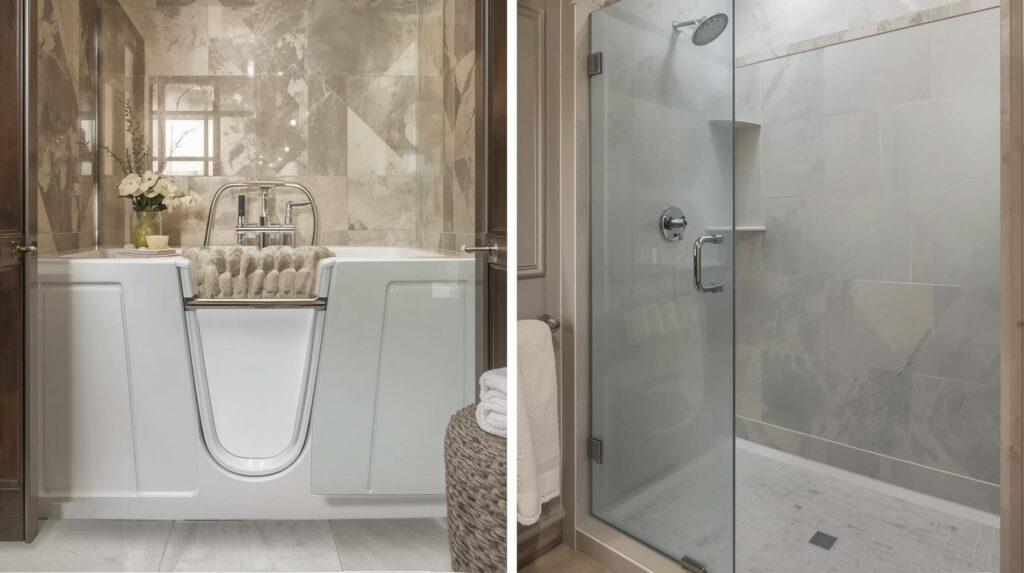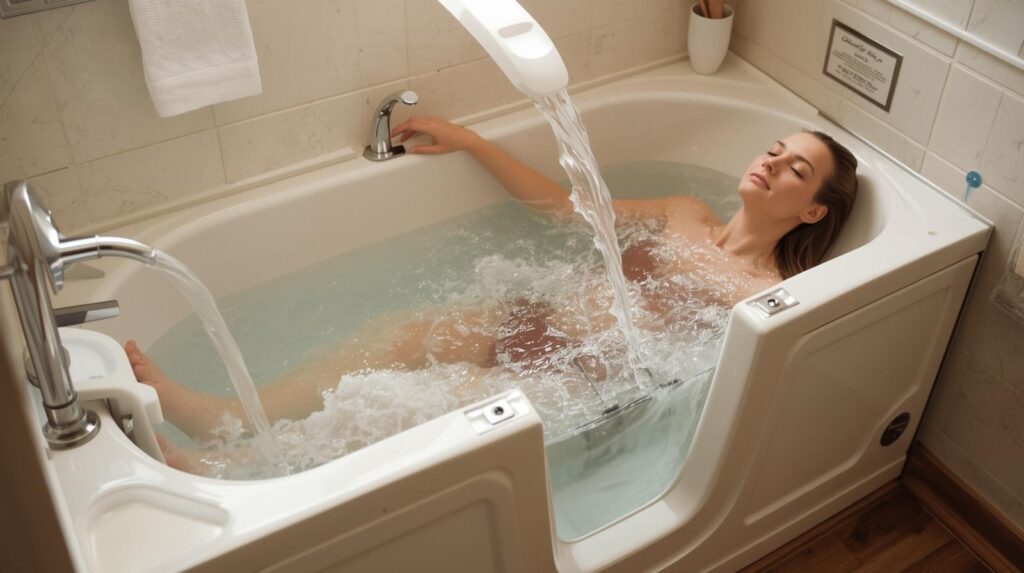This is the first and most critical financial question for any senior considering a walk-in tub: “Will Medicare help me pay for it?”
It’s a straightforward question that deserves a straightforward answer.The short, direct answer is: No, in 99% of cases, Original Medicare (Part A and Part B) does not pay for a walk-in tub.

This can be frustrating to hear, but we’re here to give you the honest facts. Medicare considers a walk-in tub a “home improvement” or “convenience item,” not “durable medical equipment” (DME). As we’ll explain, however, that is not the end of the story.
This guide will explain why Medicare says no, and then show you the 4 other ways you can get help paying for this critical safety investment.
Key Takeaways
- Original Medicare Says No: Medicare Part A & B do not cover walk-in tubs. They are not classified as “durable medical equipment.”
- Medicare Advantage (Part C) is a “Maybe”: Some (not all) Advantage plans are starting to offer benefits for home safety modifications. You must check your specific plan.
- Veterans Have a Path: The VA offers significant housing grants (like the HISA) that can be used to pay for a walk-in tub.
- It Can Be Tax Deductible: The IRS may allow you to deduct the cost as a medical expense if it’s prescribed by a doctor.
The Main Hurdle: Why Original Medicare Says “No”
Medicare’s rules are very specific. To be covered, an item must be “durable medical equipment.” According to Medicare.gov, this means it must be:
- Durable (can be used repeatedly)
- Used for a medical reason
- Not usually useful to someone who isn’t sick or injured
- Used in your home
A walk-in tub fails rule #3. Medicare’s position is that a healthy person could still use a tub, so it’s a “convenience” item, like a hot tub, not a medical necessity like a wheelchair or hospital bed.
How to Pay for a Walk-In Tub: A 4-Way Guide
Just because Original Medicare won’t pay doesn’t mean you’re on your own. Here are the 4 most common ways to make this investment manageable.
1. Medicare Advantage (Part C) Plans
This is the “maybe” you need to check. Medicare Advantage plans (the private plans that replace Original Medicare) have more flexibility.
- How it works: Some (not all) Part C plans are offering supplemental “in-home support” benefits. This can include an allowance for home safety modifications, which may include a walk-in tub if it’s deemed medically necessary to prevent injury.
- What to do: You must check your specific plan. Call the member services number on the back of your card and ask, “Does my plan offer a benefit for ‘home safety modifications’ or ‘accessibility improvements’?”
2. Veterans Benefits (A Strong Possibility)
If you are a veteran, this is your best path. The VA is much more focused on home safety than Medicare is.
- How it works: The VA offers grants (money you don’t pay back) for home modifications to help veterans with disabilities (both service-connected and non-service-connected).
- What to look for:
- Home Improvements and Structural Alterations (HISA) Grant: A walk-in tub to improve safety and accessibility is a common use for this grant.
- What to do: Start by visiting the VA’s website for housing assistance grants to check your eligibility.
3. Low-Payment Financing
This is the most common path. Reputable installers understand this is a major purchase and offer financing plans to make it affordable.
- How it works: Similar to financing a car, you can spread the total cost (which we cover in our Walk-In Tub Cost Guide) over several years. This turns a large, one-time bill into a predictable, fixed monthly payment.
4. Tax-Deductible Medical Expense
This is a path many people overlook. The IRS may allow you to deduct the cost of the tub and installation as a “medical expense.”
- How it works: The IRS allows you to deduct expenses for “capital improvements” to your home if their main purpose is medical care. To qualify, you would need a doctor’s prescription stating that the walk-in tub is medically necessary to treat a specific, chronic condition (like severe arthritis or a high fall risk).
- What to do:
- Get a letter of medical necessity from your doctor.
- Keep all receipts for the tub and the installation.
- We highly recommend consulting with a tax professional and reviewing the IRS’s Publication 502 (Medical and Dental Expenses).
Your ‘Path to Payment’ Checklist (What to Do Next)
This information can feel overwhelming. Use this simple checklist to find the right path for you.
- [ ] 1. For VA Benefits: Call my local VA office or visit the VA.gov website to ask about my eligibility for a “HISA” (Home Improvements and Structural Alterations) grant.
- [ ] 2. For Medicare Advantage: Call the number on the back of my Medicare Advantage (Part C) card and ask this exact question: “Does my plan offer a supplemental benefit for ‘home safety modifications’?”
- [ ] 3. For Tax Deduction: Call my tax advisor and ask: “Can I deduct a walk-in tub as a ‘capital improvement for medical care’ if I get a doctor’s prescription?”
- [ ] 4. For Financing: Ask my installer (during the free quote) for their “fixed-payment plans” and any “0% interest” offers.
Frequently Asked Questions (FAQ)
1. This seems complicated. Who can help me figure this out? A reputable, full-service installer. A good company won’t just sell you a tub; they will have experts on staff who understand the financing, tax, and VA options. They will guide you through the process. This is a key reason to get a professional, in-home quote.
2. Are there any other grants for seniors? Yes, but they are very specific. The USDA’s Rural Repair and Rehabilitation Grant (Section 504) can offer grants to very-low-income seniors in rural areas to remove health and safety hazards. You must check their specific eligibility rules.
3. What’s the best first step if I need help paying? Your best first step is to get a free, in-home consultation. A reputable installer will not only give you a locked-in price quote but will also be an expert on the financing options and benefits (like VA grants) that are available to you.
Don’t Let a “No” from Medicare Stop You
Hearing that Medicare won’t pay can be discouraging, but it’s not a dead end. From VA benefits to smart financing, there is a path forward.
This is an investment in your safety and your independence—a way to ensure you can stay in the home you love for years to come.
Learn about your options. Get a free, no-obligation quote from a pre-vetted local installer to discuss a plan that works for you.




